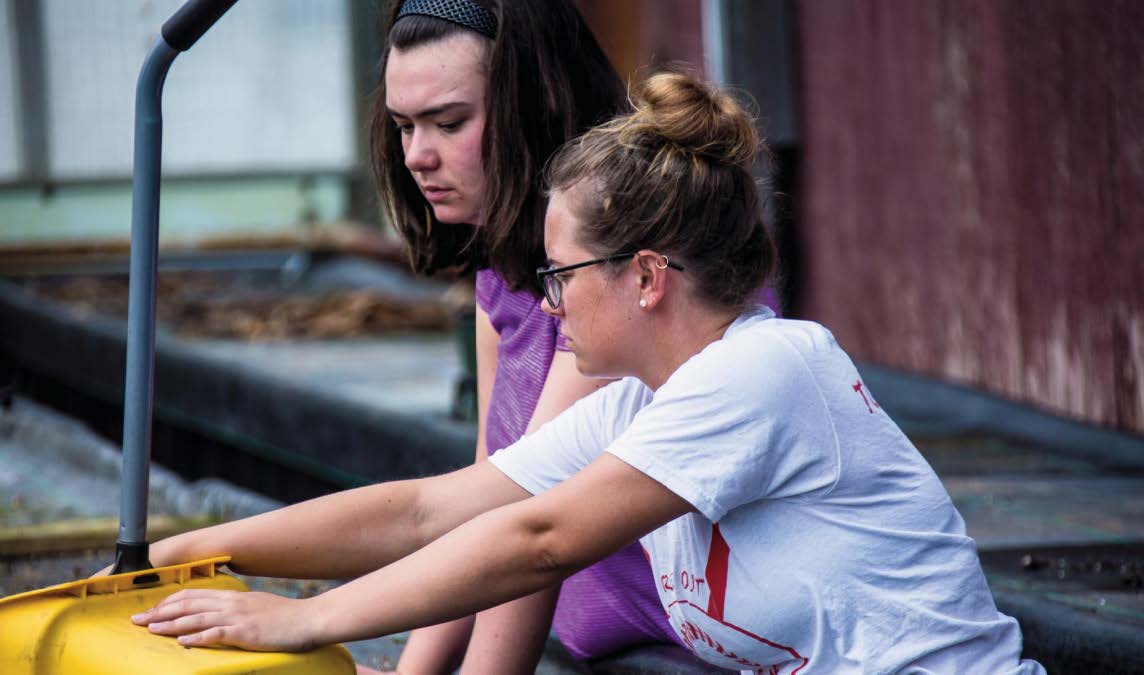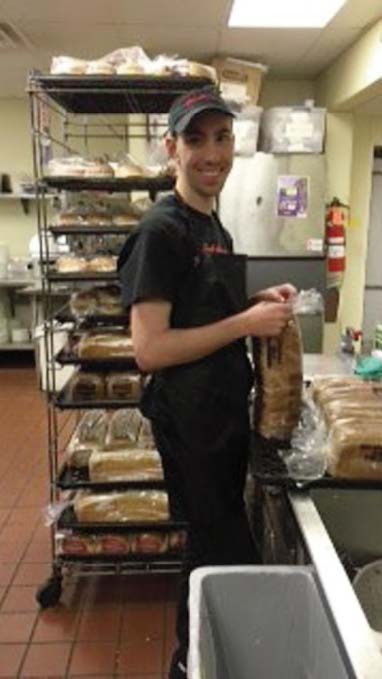October marked National Disability Employment Awareness Month, which traces its origins to 1945. Much has changed since that time. Today our nation recognizes the needs and contributions of individuals with all types of disabilities, and legislation is continually evolving to protect the rights of individuals with disabilities in the workplace.
Integrated employment for individuals with disabilities has become a priority over the past several years, bringing with it significant changes to Federal and state law. The Workforce Innovation and Opportunity Act (WIOA) was signed into law in July 2014, amending the Rehabilitation Act of 1973. The WIOA prioritizes the services for youth with disabilities, requiring state vocational rehabilitation agencies to make certain "pre-employment transition services" available to all students with disabilities, setting spending requirements in support of those services. The primary goal for all people with disabilities is Competitive Integrated Employment at minimum wage or higher in a work environment that is fully-integrated with co-workers who do not have disabilities.
In March, 2016, Governor Tom Wolf signed Executive Order 2016-03 Establishing the "Employment First' Policy and Increasing Competitive-Integrated Employment for Pennsylvanians with a Disability," with the goal of making Pennsylvania a model state for employment of workers with a disability. Implementation of the nearly 70 recommendations released in September, 2016 in support of the Order is currently underway.
With the passage of this legislation, additional attention is also being devoted to promoting strong transitions for students with disabilities into adulthood and the workplace. The Individuals with Disabilities Education Act (IDEA) mandates that Secondary Transition Planning, which is the process of preparing students with disabilities for life after they leave high school, including participation in post-secondary education or training, employment, and community living, needs to begin no later than age 14. This early focus on transition planning is well-placed, as early planning and engagement from the student and parents results in better post-secondary outcomes for students.
Data confirms the need for additional resources and emphasis upon integrating individuals into the workplace. According to the Bureau of Labor Statistics, people with disabilities are much less likely to be employed than those with no disability: 20% of people with a disability participate in the workforce compared with a 63%
participation rate for all people. Within two years post-education, about 75% of youth with disabilities still live with their parents fulltime, not attending post-secondary education or working. The statistics can be more troubling for young adults with autism: over one-third of young adults with autism have neither a job nor plans for continuing education after high school. According to the National Autism Indicators Report (2015) by the A.J. Drexel Autism Institute, employment difficulties for individuals with autism persist into their 20's: only 58% are employed.
These statistics are clearly distressing, and pose large-scale implications for our educational systems, employers and overall economy. Most immediately, however, it can be frightening information for parents to absorb, and the process can be overwhelming.
From the parents' perspective, helping a child with special needs prepare for a successful transition into the workforce can be daunting, as the legal mandates that drive school services change when
a child turns 21.The additional resources that are being devoted to this time of transition, and ensuring inclusive workforce settings for individuals with disabilities, present opportunities for parents and students.
The Watson Institute (Watson) has been providing special education and supportive services to children
DATA CONFIRMS THE NEED FOR ADDITIONAL RESOURCES AND EMPHASIS UPON INTEGRATING INDIVIDUALS INTO THE WORKPLACE. ACCORDING TO THE BUREAU OF LABOR STATISTICS, PEOPLE WITH DISABILITIES ARE MUCH LESS LIKELY TO BE EMPLOYED THAN THOSE WITH NO DISABILITY: 20% OF PEOPLE WITH A DISABILITY PARTICIPATE IN THE WORKFORCE COMPARED WITH A 63% PARTICIPATION RATE FOR ALL PEOPLE.
with special needs for a century. With that experience and specialized expertise, we are often asked to provide best practice guidance to parents, community agencies and other stakeholders based upon our special education model as best practice. Watson assists its students and their parents by providing guidance through that process, and encourage participation by students and parents in that planning process. To work toward a smooth transition from school to work or post-secondary training/education, we recommend that parents consider the following mindset and activities:
1) BE OPEN MINDED AND ENTHUSIASTIC:
Your student will pick up on your level of anxiety and stress level, so try to think of this process as an adventure that you are embarking upon together and be enthusiastic about it. This is an exciting time for your student and something that you can work on together as a project – try to have fun together. Approaching this process can dredge up feelings that are uncomfortable for you: looking at goals with your child that are achievable; setting aside what you want in favor of what your child wants, for example. Be sure to use your own support network to get the support you need as you go through this with your child.
2) FAMILIARIZE YOURSELF WITH TRANSITION SERVICES AVAILABLE:
Your school guidance counselor, Special Education Director or Transition Coordinator is an excellent resource and the best place to start. School districts offer a variety of resources to assist parents and students they can help you navigate this process. Talk to other parents; connect with Watson on Facebook to connect with other parents, and sign up for Watson's Teacher Tips for helpful activities and tips that include transition activities.
3) CONNECT WITH THE OFFICE OF VOCATIONAL REHABILITATION (OVR):
The Early Reach Initiative at OVR has Early Reach Coordinators that reach out to youth with disabilities as early as age 14 to familiarize students and families with OVR services as well as what to expect from vocational rehabilitation services. Form these connections early and forge a strong working relationship with your
child's OVR counselor. Pennsylvania's Office of Vocational Rehabilitation provides a wealth of information and resources, including transition to work planning for parents: dli.pa.gov Other states have similar resources available.
4) ACTIVELY INVOLVE YOUR CHILD IN HIS/HER PLANNING:
Watson completes assessments to include interest and vocational inventories, vocational assessments and career planning tests with students, and students participate in their own goal-planning. Students are more likely to be invested in and work toward goals that they have a role in setting. Talk to your son or daughter about his or her future and help them identify their strengths. Doing so will help the process be less intimidating to them. His or her goals will evolve and change as he or she works through the process, and that's ok – that's what should happen as your child explores his or her interests and figures out what they want to do. What's most important is learning a skill, particularly one that will translate into meaningful work for your child in today's changing workplace. Remember that with the fast pace of technology, including artificial intelligence, the jobs available and what work looks like varies greatly from what it was like when you were going through this process. Learn alongside your child – explore the experience together.
5) BUILD FUNCTIONAL AND DAILY LIVING SKILLS:
Community Based Instruction (CBI) provides instruction in naturally occurring community environments to provide "real life expe
riences." Through activities such as CBI, students learn community inclusion with individuals without disabilities while learning functional activities such as money handling and counting change, banking, budgeting, time concepts and management. Parents can practice adult living skills with their child. Outings such as shopping can be an excellent practice session. This includes choosing the store, selecting and trying on clothes, and paying for the purchase. Other activities to try: using public transportation; selecting a destination, determining the route and stop, and accompanying the child; going to the bank; selecting a restaurant and dining out. These skills will be needed throughout life, but are essential for a smooth transition to post-secondary education or a workplace setting.

6) BUILD SOCIAL, WORK AND COLLEGE PREPAREDNESS SKILLS:
Social skills including how to accept constructive criticism, responding appropriate to authority, and behaving courteously are important skills for students to learn. Practice these with your son or daughter and create occasions for them to practice these skills. Watson offers social skills groups for children up to age 21 to practice peer interaction and develop friendships, an important part of being an independent adult. The goal is to help children with Autism Spectrum Disorder to improve conversation skills, and develop and maintain friendships. Visit: thewatsonin- stitute.org/programs/psychological-services/therapy-services Watson will be launching a college acclimation program in the summer of 2018 for adolescents diagnosed with Autism and Autism Spectrum Disorder, with a focus upon the development of skills necessary to succeed at college. The program will include ther
apeutic, learning and social components. Appropriate candidates will possess academic capabilities necessary for college, but have significant limitations in their social and organizational skills. Check back thewatsoninstitute.org/programs/summer-programs for more information.
7) REMEMBER – SMALL STEPS TO PROGRESS:
This is all new to your child, just as it is to you (a lot has changed since you were navigating this process.) Your child may choose to start by crossing off things he or she doesn't want to do, or thinking about things they don't like to do – that's ok. As long as they are thinking generally about their future. Knowing what you don't want to do can be almost as helpful as knowing what you want to do!


You know by now that you are your child's best advocate; after all, that's why you're reading this. All of these activities are helping you to transition from being your child's advocate to equipping your child to be his or her own advocate. You aren't alone – there are more resources now than ever to help you and your child through this process. Take advantage of those resources to take on this new challenge before you both!